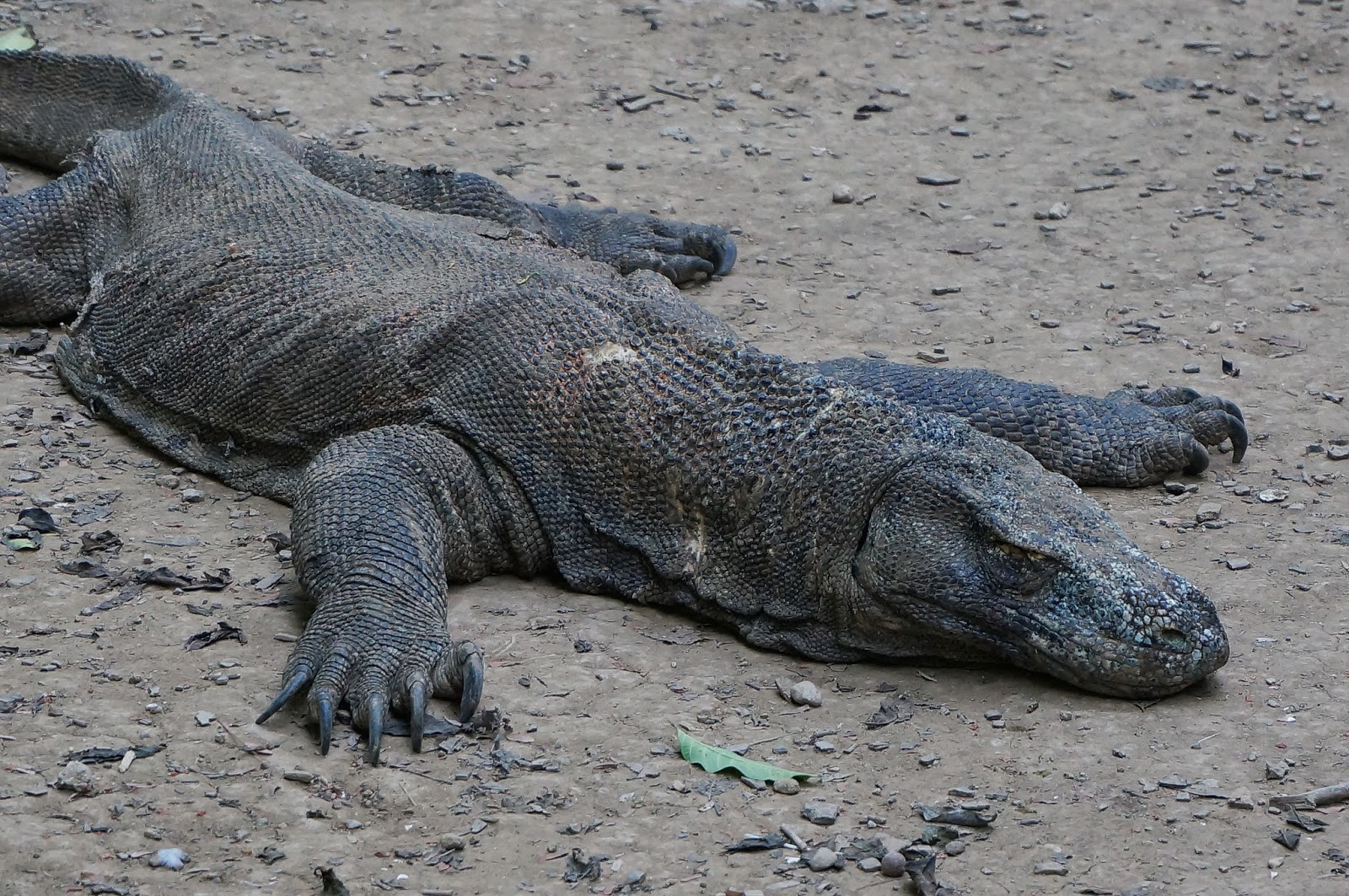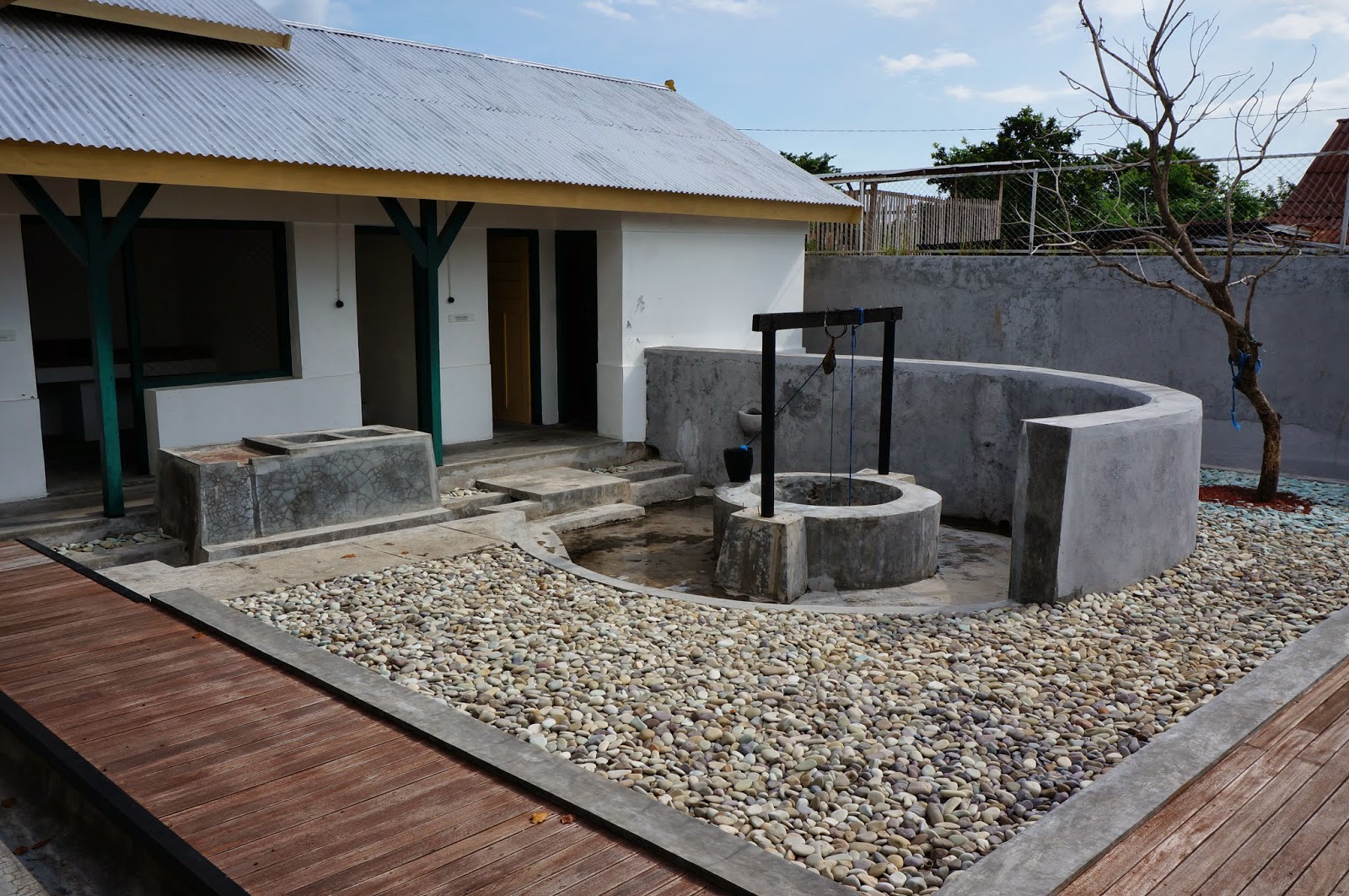Welcome to Labuan Bajo, the port city to Komodo National Park, found on the western edge of Flores. If you were to simply skip my introduction and proceed to the beautiful pictures of scenery below you would be rudely surprised by what Labuan Bajo actually looks like. The city is directly on the bay and consists of a one way road. On each side are restaurants catering to tourists and diving/touring companies taking eager travelers to Komodo National Park. The streets, filthy, and the smell, fish, such is the the essence of a seaside town.
After landing, Rashidah and I hopped on a pair of ojeks (a scooter taxi) and headed to Golo Hilltop Hotel. Found at the top of a hill a few kilometers from Labuan Bajo, I was pleasantly surprised by this hidden treasure. Run by a pair of Dutch women, it had an outstanding view of the ocean, excellent service, and a shockingly good westernized breakfast that was most welcomed.
View from Golo Hilltop Hotel
Another Angle
 The first day was relaxation and exploration of Labuan Bajo. Our only objective was to secure our trip to Komodo National Park and fulfill my childhood dream of being among Komodo Dragons. We rented a scooter and explored the town relatively quickly before Rashidah and I haggled with several of the locals and obtained inexpensive all-inclusive tickets. It should be noted that this was mostly due to Rashidah's ability to speak fluent bahasa.
The first day was relaxation and exploration of Labuan Bajo. Our only objective was to secure our trip to Komodo National Park and fulfill my childhood dream of being among Komodo Dragons. We rented a scooter and explored the town relatively quickly before Rashidah and I haggled with several of the locals and obtained inexpensive all-inclusive tickets. It should be noted that this was mostly due to Rashidah's ability to speak fluent bahasa.
I was a little skeptical of the purchase considering the merchant had an unsettling sly look about him and consistently used the phrase "no lie", which immediately caused me to question his integrity. My unease was exacerbated the following day when a French couple that joined us on the trip was obviously taken advantage of and paid significantly more than we did for their tickets. The merchant again ended each sentence with "no lie", which everything he said were obvious lies. However, I did my best to let it all go and remain as optimistic as possible despite my previous Indonesian experiences when there always seemed to be unforeseen complications. We set out...
View from the Bow
Typical landscape of Komodo National Park
Greeted at the pier by several of the local tour guides, we were taken to the registration area to pay for our park fees. On the way, I had my first experience with a Komodo Dragon.
Our group was walking along a path when the tour guide paused and pointed out to a field where he claimed there were Komodo Dragons. Unable to see them I walked off the path and neared a dirt laden patch underneath some trees. I looked out into the distance and was disappointed that I couldn't see the Komodo's. I lowered my head in defeat, but hastily jumped back when I realized I was standing five feet from one of them. I couldn't believe how well they were able to blend into their environment. Don't take my word for it, what do you think?
I came a little to close to these Komodo's
See Her?
How about now?
Rashidah and I at a hilltop during our tour of Rintja Island

Rintja is a green, slightly brownish hilly expanse of land littered with tall palm trees. It immediately reminded me of another childhood favorite...
Water Buffalo
Young Komodo Dragon
 Komodo Dragons are the largest living species of lizard in the world, growing to up to 3 meters (10 ft) and weighing up to 70 kilograms (150 lb). Their unusual large size is attributed to island gigantism, since they have no other competing predators on the islands. Young Komodo Dragons live high up in trees the first few years of their life eating invertebrates and birds; they avoid adults at all costs. The adults graduate to larger mammal prey, but will also scavenge if necessary.
Komodo Dragons are the largest living species of lizard in the world, growing to up to 3 meters (10 ft) and weighing up to 70 kilograms (150 lb). Their unusual large size is attributed to island gigantism, since they have no other competing predators on the islands. Young Komodo Dragons live high up in trees the first few years of their life eating invertebrates and birds; they avoid adults at all costs. The adults graduate to larger mammal prey, but will also scavenge if necessary.According to our guide, new research suggests that Komodo Dragons may have a third eye (not in the traditional sense) on the top of their head that allows them to sense movements from any angle. Komodo's have a long, yellow, deeply forked tongue that they use to detect, taste, and smell stimuli, similarly to many other reptiles. Interestingly, male Komodo's have a similarly shaped penis due to females having reproductive organs behind either their left or right leg. They lay about 20 eggs in September that hatch in April. The babies then move instinctively to the trees before being consumed by a cannibalistic adult. These are fascinating incredibly unique animals.
Komodo Dragon Nest
Komodo's under the Ranger Houses
My National Geographic Submission
Komodo's have a debilitating bite, there saliva is loaded with bacteria, some studies have found up to 57 different strains. When they bite their prey, they wait. Eventually, the infection from the overwhelming amount of bacteria causes sepsis and death, then the Komodo's feed. Scientists do not understand how Komodo's are able to live with the overwhelming amount of bacteria found in their saliva, it shouldn't be possible.
Overall, I saw Komodo Dragons, monkeys, a water buffalo, and a poisonous snake that scared the wits out of our tour guide on Rintja.
Pink Beach, one of only a handful in the world
Sunset and a night spent sleeping on a boat with strangers. Tomorrow Komodo Island and more dragons!
Welcome to Komodo Park!
Rashidah & I, Komodo Dragon Walking Trails
Interesting Komodo Origin Story
Another National Geographic Submission
Young Komodo Dragon on a Hilltop
Rashidah & I on Sulphurea Hill
Overall, simply an incredible experience that exceeded my expectations. I was blown away by how smoothly the 2 day boat trip went, the comfort I received at the Golo Hilltop Hotel, and putting a big check-mark through an item on my bucket list. This was unquestionably my favorite part of Indonesia that I have visited. I only hope that my future experiences will approach the amount of enjoyment I had on this trip.




















.JPG)























.JPG)













.jpg)







.JPG)



.jpg)




















